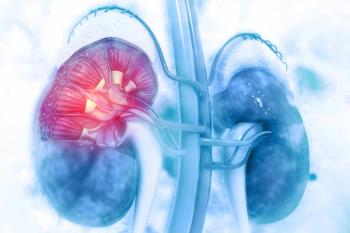
PBRM1, VHL Expression Linked With Clear Cell RCC Aggressiveness
Reduced expression of PBRM1 and VHL was correlated with increased tumor aggressiveness in clear cell renal cell carcinoma, according to the results of a recent study.
Reduced expression of PBRM1 (polybromo-1 gene) and VHL (von Hippel-Lindau gene) was correlated with increased tumor aggressiveness in clear cell renal cell carcinoma (RCC), according to the results of a recent study
“We identified VHL as a driver for worse patient outcome, independently from PBRM1 expression pattern,” wrote study authors led by Anica Högner, MD, of Charité–Universitätsmedizin Berlin, Germany. “Further investigations with a larger patient cohort and analysis of combined PBRM1 and VHL loss on mutational level are needed to strengthen our hypothesis of the gatekeeper function of PBRM1 additional to VHL loss, serving as the basis for clear cell RCC development and progression.”
In the study, the researchers examined the clinicopathologic association of PBRM1 and VHL expression at the mRNA and protein levels in clear cell RCC. They performed immunohistochemical analysis, Western blotting, and quantitative polymerase chain reaction (PCR) analysis of the two genes in fresh-frozen clear cell RCC tissue and adjacent tissue from 70 patients who underwent radical nephrectomy.
In the fresh frozen tissue, the median age of patients was 66. Using real-time PCR, PBRM1 was significantly downregulated in 77.6% of specimens and VHL was significantly downregulated in 80.6% of specimens. About one-quarter (21.4%) of tumors had simultaneous weak expression of PBRM1 and VHL protein expression.
To evaluate the effect of loss of PBRM1 and VHL immunohistologic expression on clinicopathologic features and survival, the researchers also performed tissue microarray on specimens from 326 clear cell RCC patients. The median age of patients was 61 years.
In these samples, weak PBRM1 and VHL immunohistochemical staining was observed in 60.4% of cases and was correlated (P < .001). Tumors with predominantly weak PBRM1 and VHL expression was associated with higher Fuhrman grade (P = .012 and P = .024, respectively). However, tumors with only weak VHL expression were associated with a higher pT stage (P = .023). PBRM1 expression did not have an effect on patient overall survival, but weak VHL expression was associated with significantly decreased overall survival (P = .013).
According to the researchers, these results “suggest that combined loss of PBRM1 and VHL may be involved in clear cell RCC tumorigenesis, and may contribute to tumor aggressiveness.”
Newsletter
Stay up to date on recent advances in the multidisciplinary approach to cancer.





















































































